Rochdale Town Hall restoration project
 Rochdale Town Hall is widely-regarded as one of the UK’s finest examples of Victorian gothic architecture. The Grade-I listed building was designed by William Crossland and opened in 1871 as a symbol of the town’s industrial standing in the textiles trade. According to Historic England, its ornate stylings are rivalled only by the Palace of Westminster.
Rochdale Town Hall is widely-regarded as one of the UK’s finest examples of Victorian gothic architecture. The Grade-I listed building was designed by William Crossland and opened in 1871 as a symbol of the town’s industrial standing in the textiles trade. According to Historic England, its ornate stylings are rivalled only by the Palace of Westminster.
Rochdale shops given colourful facelift as part of major heritage project
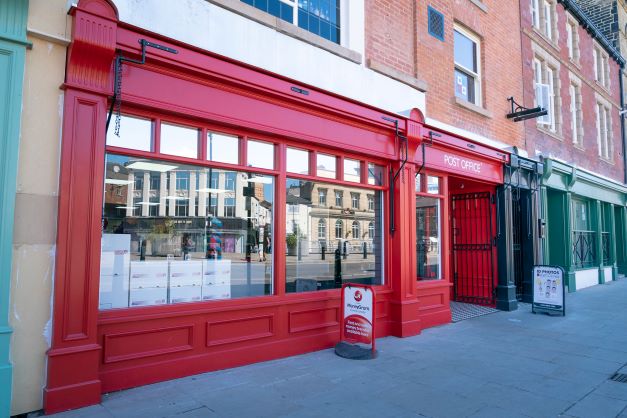 A row of shops in Rochdale town centre has been given a new lease of life thanks to a series of colourful, Victorian-style facelifts.
A row of shops in Rochdale town centre has been given a new lease of life thanks to a series of colourful, Victorian-style facelifts.
The South Parade and Drake Street Property Improvement Scheme, a collaboration between Rochdale Borough Council and Historic England, has transformed 12 shops with a bright new look.
Read more: Rochdale shops given colourful facelift as part of major heritage project
Pershore Abbey tower: a fitting tribute for the Jubilee
 Pershore Abbey was one of the largest medieval abbeys in Britain – even larger than Worcester Cathedral – before it was part destroyed in the Reformation. The tower was added in 1350 and has stood as a beacon which can be seen for several miles across the district.
Pershore Abbey was one of the largest medieval abbeys in Britain – even larger than Worcester Cathedral – before it was part destroyed in the Reformation. The tower was added in 1350 and has stood as a beacon which can be seen for several miles across the district.
Until recently the tower has externally been bathed in white light during the hours of darkness. However, a generous donation from The Friends of Pershore Abbey has enabled a new state-of-the-art colour change LED floodlighting system to be installed by lighting specialists Anthony J Smith(Glos) Ltd. It was first used over the Jubilee weekend with the tower being illuminated in red, white and blue which cycled through the colours every 15 seconds.
Read more: Pershore Abbey tower: a fitting tribute for the Jubilee
Variety of external lighting shows the splendour of Lincoln Cathedral
 Standing tall over the city, Lincoln Cathedral is a magnificent and iconic international landmark, and one of Britain’s most spectacular pieces of architecture. Once admired as the tallest building in the world, the spire at Lincoln Cathedral was an impressive feat of engineering, reaching a remarkable 525 feet before the central spire collapsed in 1548, nearly 250 years after its completion, and was never replaced.
Standing tall over the city, Lincoln Cathedral is a magnificent and iconic international landmark, and one of Britain’s most spectacular pieces of architecture. Once admired as the tallest building in the world, the spire at Lincoln Cathedral was an impressive feat of engineering, reaching a remarkable 525 feet before the central spire collapsed in 1548, nearly 250 years after its completion, and was never replaced.
Read more: Variety of external lighting shows the splendour of Lincoln Cathedral
D C Blacksmiths - family business forges ahead
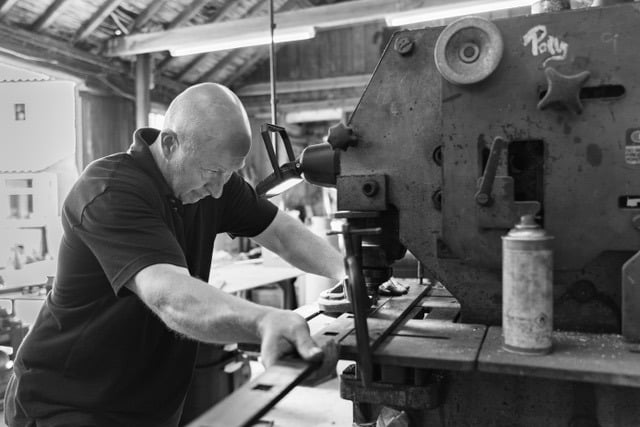 D C Blacksmiths are specialists in the conservation, restoration and reproduction of period architectural wrought iron and designers of new and contemporary styles of forged metalwork, using traditional blacksmithing techniques and jointing methods.
D C Blacksmiths are specialists in the conservation, restoration and reproduction of period architectural wrought iron and designers of new and contemporary styles of forged metalwork, using traditional blacksmithing techniques and jointing methods.
Conservation of historic library columns carried out by leading specialists
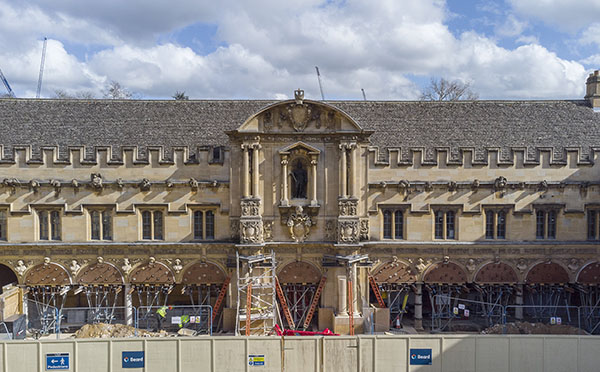 Extensive repair, restoration and replacement work on the Grade One-listed Laudian Library extension in the Canterbury Quadrangle of St John’s College, Oxford is being carried out by Szerelmey, working alongside Beard Construction and Wright and Wright Architects. It follows the successful delivery of a package of works to create a new library and study centre, with artwork walls and interior and exterior paving which was completed by Szerelmey in 2019. The Canterbury Quadrangle is one of the most famous, historic and beautiful of Oxford’s buildings.
Extensive repair, restoration and replacement work on the Grade One-listed Laudian Library extension in the Canterbury Quadrangle of St John’s College, Oxford is being carried out by Szerelmey, working alongside Beard Construction and Wright and Wright Architects. It follows the successful delivery of a package of works to create a new library and study centre, with artwork walls and interior and exterior paving which was completed by Szerelmey in 2019. The Canterbury Quadrangle is one of the most famous, historic and beautiful of Oxford’s buildings.
Read more: Conservation of historic library columns carried out by leading specialists
York Handmade short-listed for two awards at brick oscars
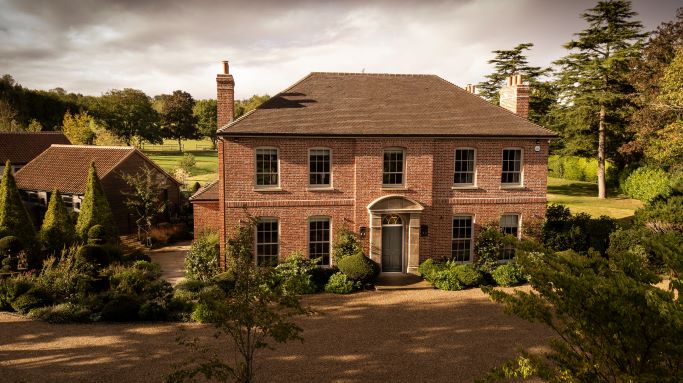 The York Handmade Brick Company, one of the leading independent brickmakers in the country, has been shortlisted in two categories in the prestigious 2022 Brick Awards.
The York Handmade Brick Company, one of the leading independent brickmakers in the country, has been shortlisted in two categories in the prestigious 2022 Brick Awards.
York Handmade, based at Alne, near Easingwold, in North Yorkshire, was short-listed in the Individual Housing and the Refurbishment categories.
York Handmade provided the bricks for Green Acres (pictured right), a stunning new detached house in Effingham in Surrey, and for Holy Trinity Church in the heart of Sunderland.
Read more: York Handmade short-listed for two awards at brick oscars
'Common Ground in Sacred Space' - restoration project keeps Newcastle Cathedral at the heart of city life
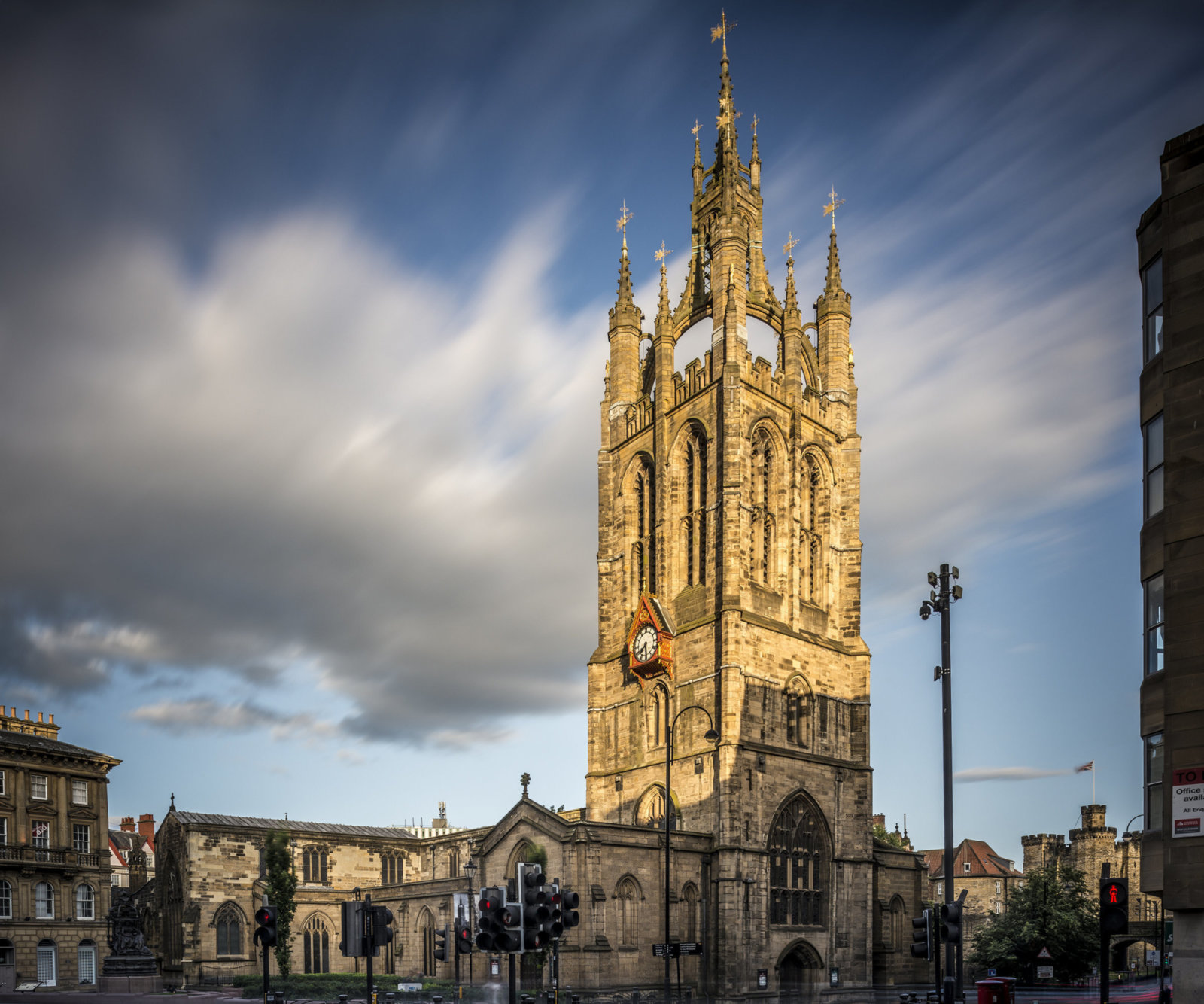 Once a guiding light for ships sailing up the River Tyne, this hill-top, metropolitan Cathedral represents, in stone and glass, over seven centuries of Newcastle’s development.
Once a guiding light for ships sailing up the River Tyne, this hill-top, metropolitan Cathedral represents, in stone and glass, over seven centuries of Newcastle’s development.
Today, the completed “Common Ground in Sacred Space” project aims to continue Newcastle Cathedral’s place at the heart of modern city life, with renewed purpose to that iconic lantern tower’s ancient role as a beckoning welcome for the city and its people.
Lambeth Palace’s new national library and archive set to open later this year
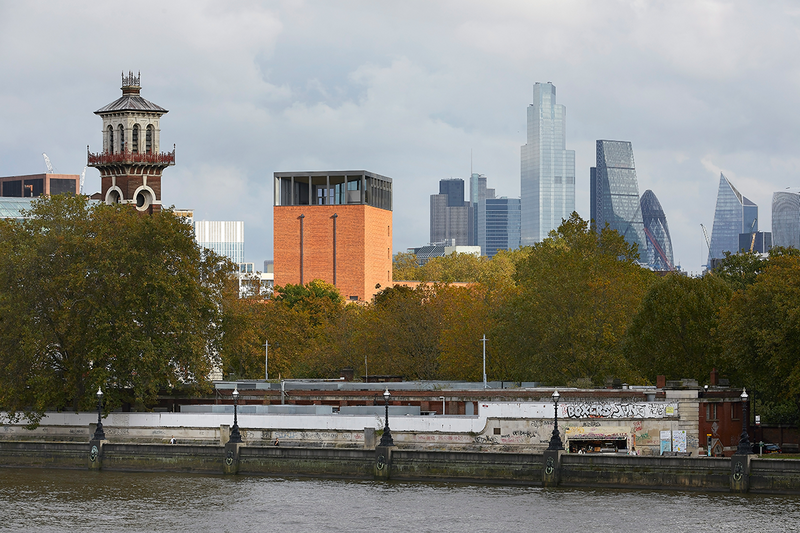 Lambeth Palace’s newly-built £23.5 million national library and archive is due to open later this year with many of the collections having already moved into the sustainably-designed building.
Lambeth Palace’s newly-built £23.5 million national library and archive is due to open later this year with many of the collections having already moved into the sustainably-designed building.
Lambeth Palace Library in London contains an “unrivalled collection” of books and manuscripts that document over 1000 years of ecclesiastical and cultural life in the UK.
Read more: Lambeth Palace’s new national library and archive set to open later this year
All Saints Church, Boyne Hill: conservation of the victorian tiled floor
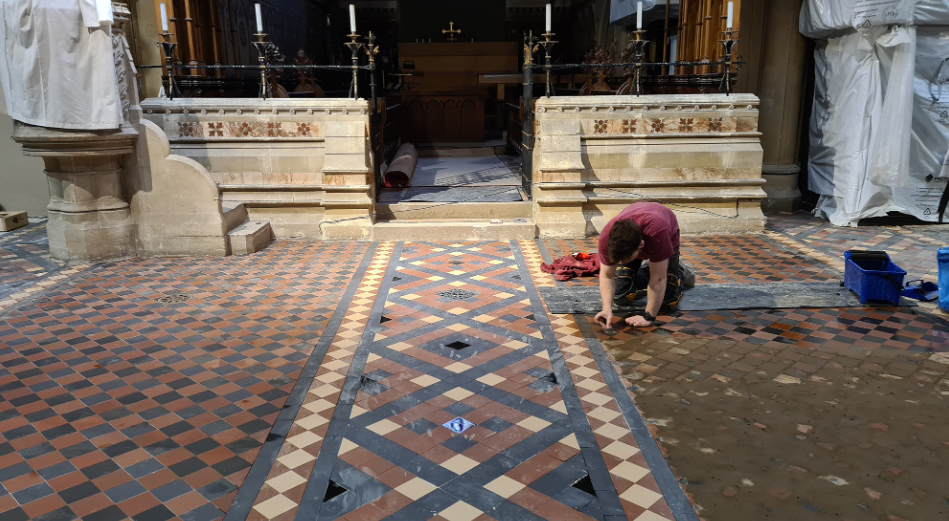
Cliveden Conservation carried out the sensitive repair of the floor in accordance with Street’s original design.
The tiled floor at All Saints Church, designed by G E Street in 1857, had become deteriorated and unsafe due to being laid on a defective substrate. Quantity surveyors Sawyer and Fisher and architect Roderick Maclellan, recommended Cliveden Conservation to carry out the sensitive repair of the floor in accordance with Street’s original design.
Read more: All Saints Church, Boyne Hill: conservation of the victorian tiled floor
New address - a move for the good
 Conservation by Design are excited to announce that the company's sales office, warehouse, and dispatch have successfully relocated and are now fully operational.
Conservation by Design are excited to announce that the company's sales office, warehouse, and dispatch have successfully relocated and are now fully operational.
Their new address is CXD International, Unit 14, Crowhill Farm, Ravensden Road, Wilden, Bedford MK44 2QS. Their phone number and email address will remain the same: 01234 846300 and This email address is being protected from spambots. You need JavaScript enabled to view it.
York Handmade project nominated for prestigious Stirling Prize
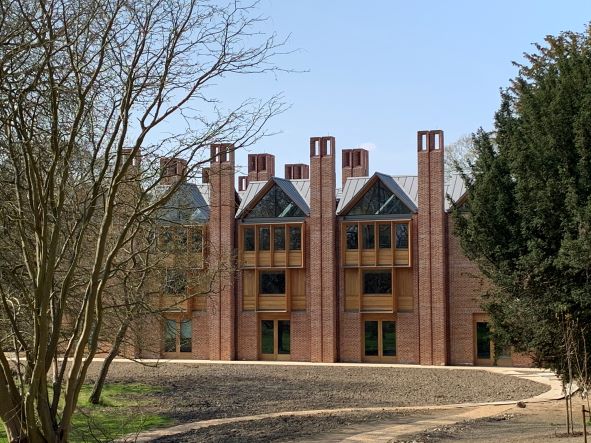 One of the York Handmade Brick Company’s most acclaimed projects has been shortlisted in the prestigious 2022 RIBA Stirling Prize.
One of the York Handmade Brick Company’s most acclaimed projects has been shortlisted in the prestigious 2022 RIBA Stirling Prize.
York Handmade, based at Alne, near Easingwold, in North Yorkshire, provided more than 300,000 bricks for the magnificent new Magdalene College Library at Cambridge University.
The library is one of six projects in line for this year’s Stirling Prize, the highest accolade in architecture. It is awarded for the UK’s best new building of the past 12 months.
Read more: York Handmade project nominated for prestigious Stirling Prize
Tron Kirk to re-open to the public
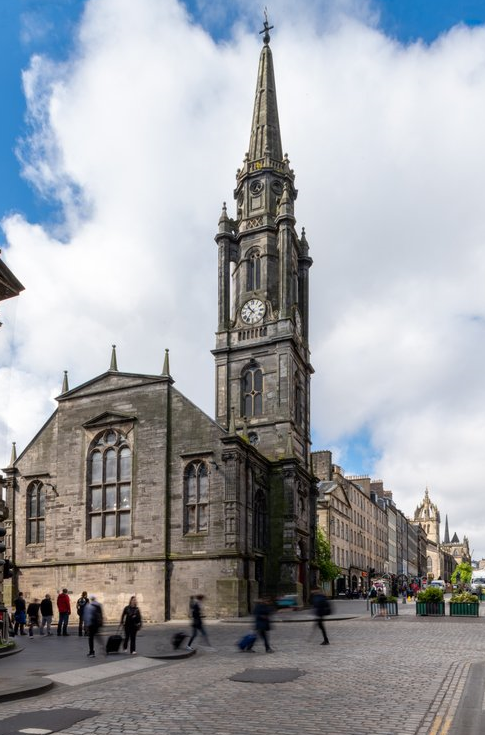 The City of Edinburgh Council has handed the keys of the Tron Kirk on Edinburgh’s Royal Mile to Scottish Historic Buildings Trust (SHBT) as the new custodians of the building. The council selected SHBT as its preferred partner to restore the Tron in 2021 and the charity has now signed a 5-year lease in an agreement that will see it take on the management role of the building as it develops the restoration project. This will convert to a 125-year lease when the capital project is ready to begin.
The City of Edinburgh Council has handed the keys of the Tron Kirk on Edinburgh’s Royal Mile to Scottish Historic Buildings Trust (SHBT) as the new custodians of the building. The council selected SHBT as its preferred partner to restore the Tron in 2021 and the charity has now signed a 5-year lease in an agreement that will see it take on the management role of the building as it develops the restoration project. This will convert to a 125-year lease when the capital project is ready to begin.













